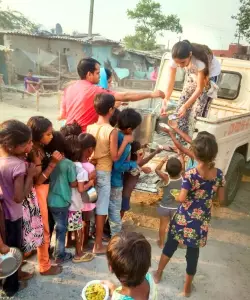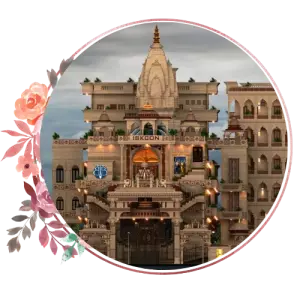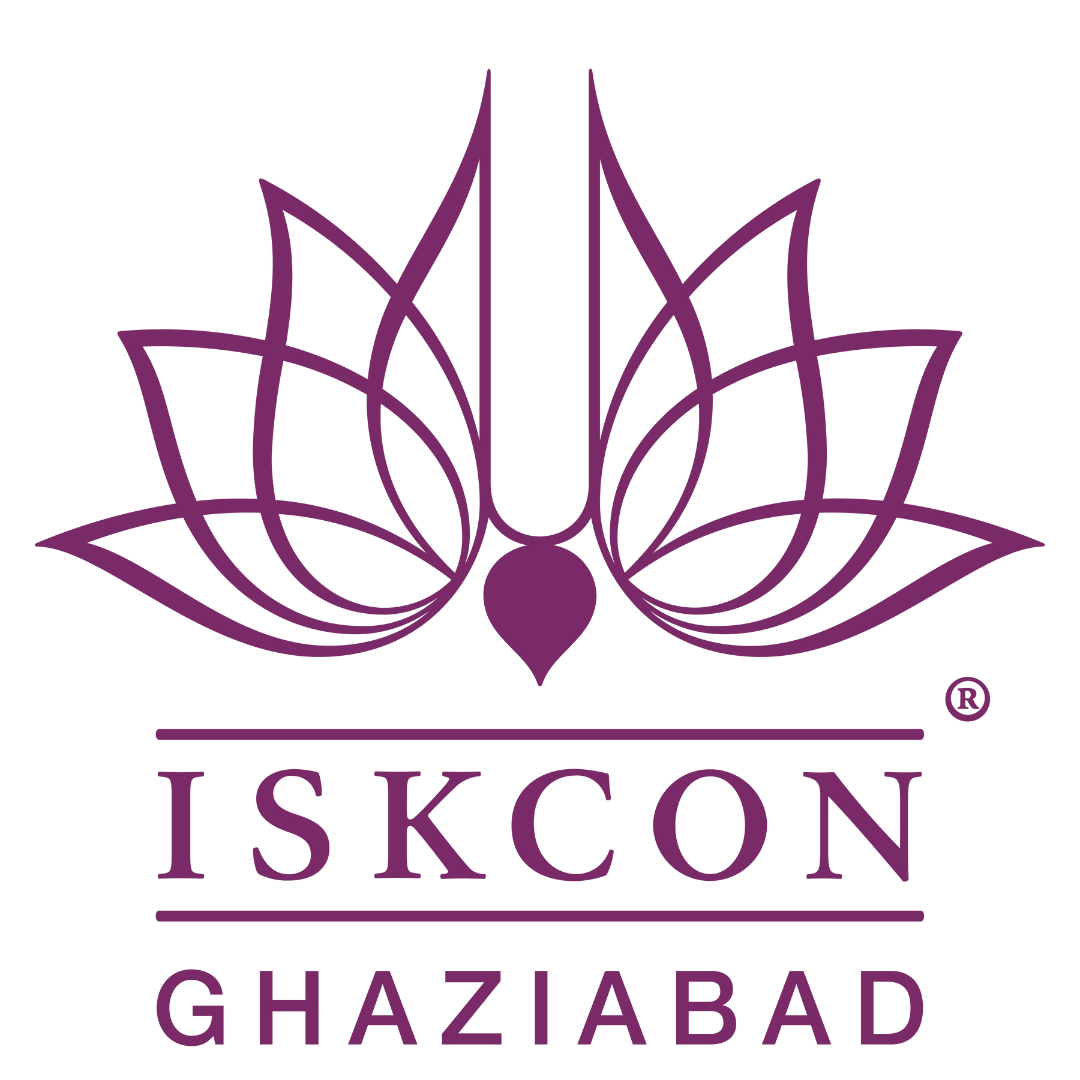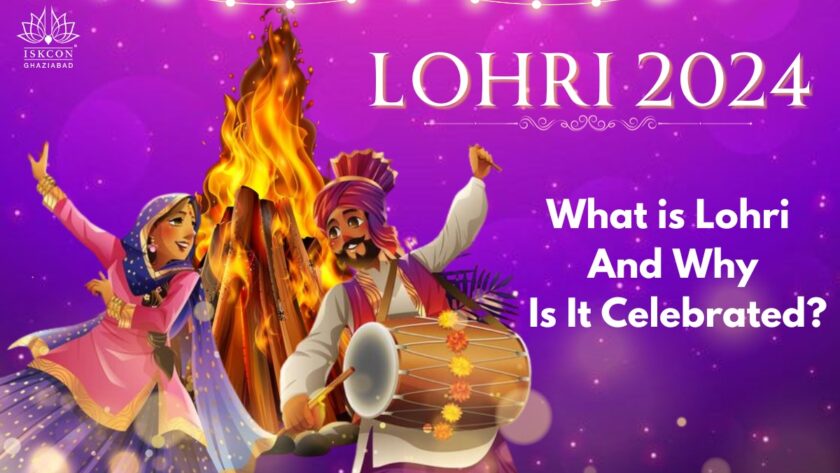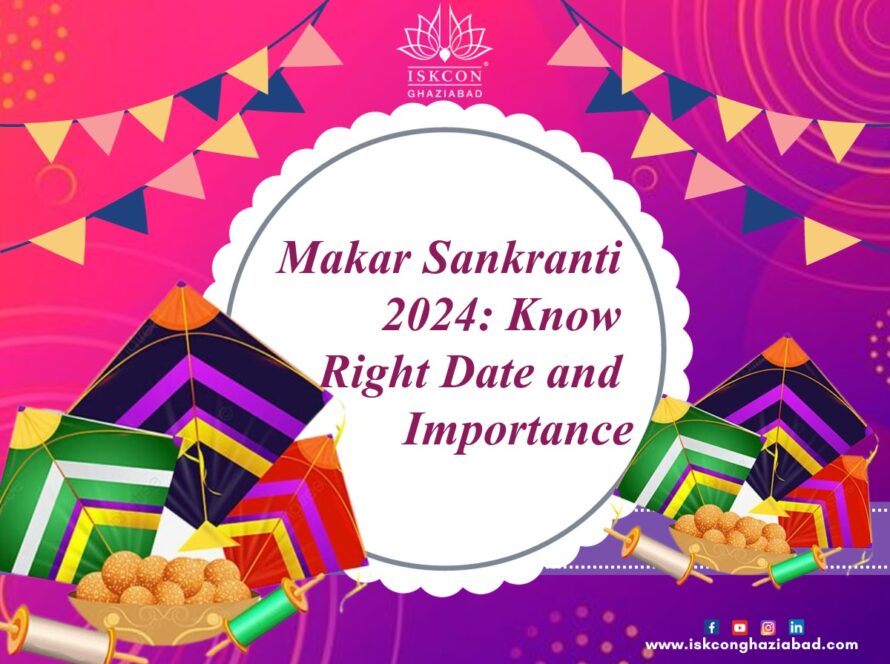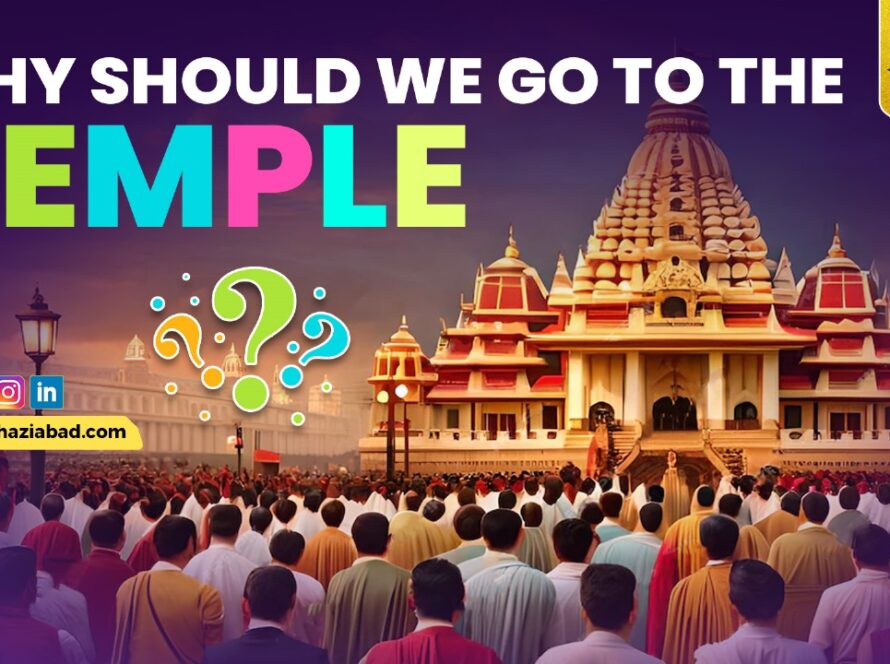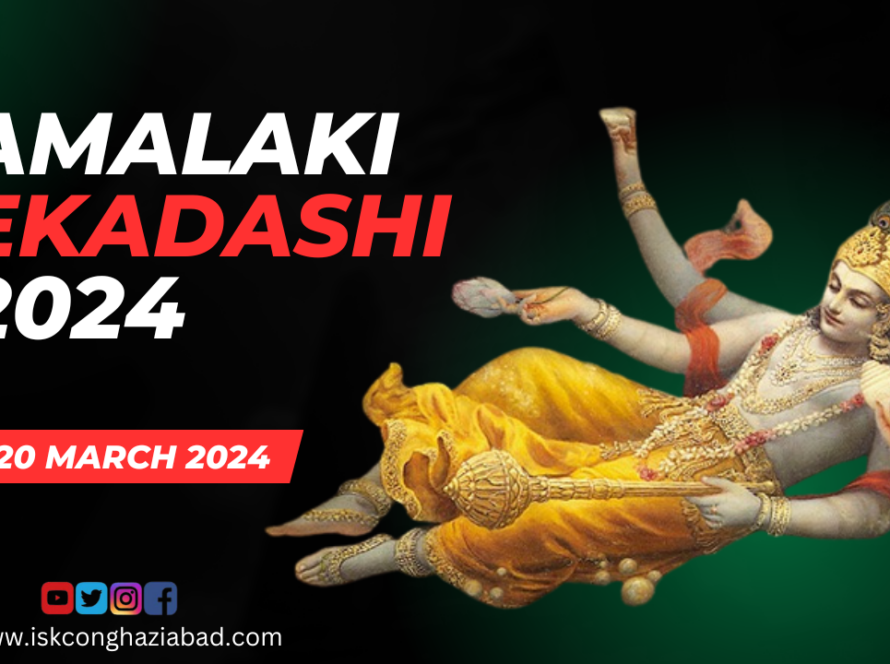Table of Contents
What is Lohri 2024?
Lohri 2024 is a popular winter Punjabi festival celebrated in the northern regions of India, especially in the Indian states of Punjab, Haryana, and Himachal Pradesh.
The cultural significance of Lohri, emphasising its connection to harvest and the welcoming of longer days. The same festival is also celebrated in other parts of India such as Pongal in Tamil Nadu, Makar Sankranti in various states, specially in Bihar and Uttar Pradesh it is known as “Khichadi”. These festivals signify gratitude for the harvest and the transition to a new agricultural cycle.
When will Lohri 2024 be Observed?
Lohri 2024 is usually observed on the 13th of January every year and marks the culmination of winter and the arrival of longer days. Lohri is primarily associated with the harvesting of the Rabi crops.
This Lohri 2024 Festival, Bring a smile to someone’s face by donating to Anna-Daan under the Food for Life program, and experience Krishna’s Divine shower of blessing in your life.
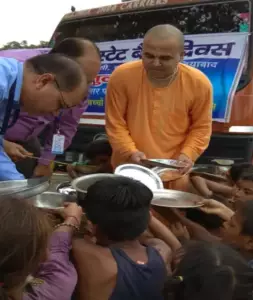
Importance of Celebrating Lohri 2024 Festival
On this day, Lord Surya, riding a beautiful chariot with millions of spokes and splendid wheels and drawn by seven horses (seven colours of the spectrum), begins His journey northward into the Makara Rasi, illuminating our lives with light and removing darkness. This light not only illuminates our physical lives and aids plant growth during planting season, but it also dispels our “internal” darkness by illuminating the path to self-realisation.
In Bhagavad Gita 4.1 Lord Krishna Says:
imaṁ vivasvate yogaṁ
proktavān aham avyayam
vivasvān manave prāha
manur ikṣvākave ’bravīt
“The Personality of Godhead, Lord Śrī Kṛṣṇa, said: I instructed this imperishable science of yoga to the sun-god, Vivasvān, and Vivasvān instructed it to Manu, the father of mankind, and Manu in turn instructed it to Ikṣvāku.”
In Brahma-Sutra 4.2.19-20 it states that:
The time of death is irrelevant in the case of a devotee. Although one who possesses knowledge of the Lord can die at any time, it is established that the exaltations of Uttarayana are to laud meditation on the route to Vaikuntha, which the prudent devotee takes at death. This celestial path, which begins with light, is ruled over by deities of increasing brilliance, one of which is Uttarayana. This marga (road) leads to Vaikuntha, the state of moksha, and shastra states that the yogi of dedication should meditate on it regularly.
The History behind Lohri
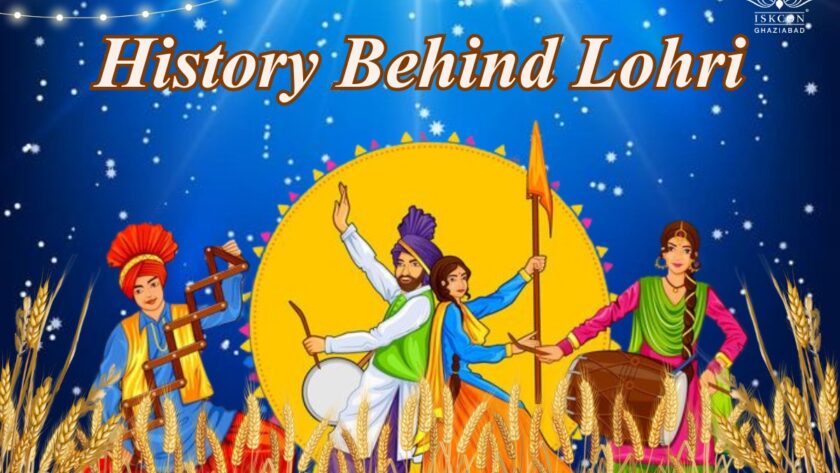
Connection with Harvest Festival
Lohri is primarily a harvest celebration, celebrating the end of the winter season and the harvesting of Rabi crops. Farmers are celebrating this day with great enthusiasum they are offering the new crops to Fire God.
Worshipping of Sun God
Lohri has elements of sun worship. A central component of Lohri celebrations is the bonfire, which pays respect to the Sun God. It is believed that lighting the bonfire will bring out the sun’s energies and offer warmth to the land.
Connection to Dulla Bhatti
Lohri is also linked to the stories of Dulla Bhatti, a legendary character from Punjabi folklore who lived during Emperor Akbar’s reign. Dulla Bhatti was a local hero famed for rescuing trafficking females and arranging marriages.
Winter Solstice Celebration
Lohri is celebrated around the time of the winter solstice, which is the shortest day and longest night of the year. The festival signifies the gradual increase in the duration of daylight, bringing the promise of warmer days and better agricultural prospects.
Pongal and Makar Sankranti Connection
Lohri shares similarities with other harvest festivals celebrated in different parts of India, such as Pongal in Tamil Nadu and Makar Sankranti in various states.
In Tamil Nadu a special dish people used to make is called as Sakkarai Pongal which is made by boiling the rice in milk. After that it is offered to Sun God. After that, family members enjoy this as Prasadam.
In other states Makar Sankranti is observed by making khichdi of newly cropped rice and various types of dal and cooked in ghee, people used to give charity of these cropped items to saintly persons to make this day more auspicious.
ISKCON Wave City Temple Construction has Restarted. Kindly Help Us Build Sri Radha Krishna Temple
Lohri and Its Spiritual Aspect
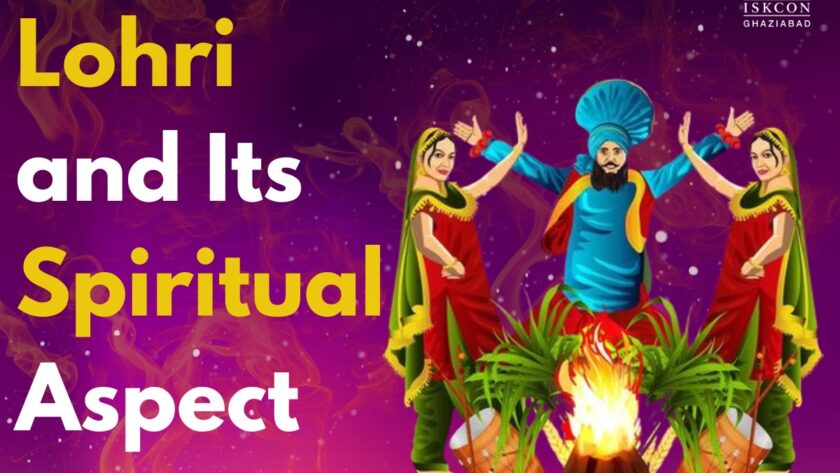
Lohri is an auspicious day when sun enters in Uttarayan. Traditionally, the Uttarayana (northern route of the Sun) was considered more auspicious than the Dakshin Ayana (southern course of the Sun). People throughout India celebrate this day with great happiness. Not only in the present time but also in the ancient time it was considered as an auspicious day, and many great connections are attached to this day like:
Bhishma Dev Departure for Vaikuntha Planet
After the war on the battlefield of Kurukshetra, when Bhishma Dev was about to leave his body, he waited for the sun to enter Uttarayan, as it is considered an auspicious time, and he left his body on the auspicious day, while beholding the beautiful face of Lord Krishna in the holy place of Kurukshetra, which is also known as Dharmakshetra and start his journey for the Vaikuntha Planet.
Descent of Mother Ganga
This glorious day also marks the arrival of Mother Ganges on this earthly planet, following the austere penances performed by King Bhageerath in order to free his ancestors from the curse of Kapila rishi, who cursed them to go to the Nether regions after being falsely accused by the sixty thousand sons of King Sagar of stealing the sacrificial horse actually stolen by Indra.
After being appeased by their pleas, he declared that the only way for them to be saved would be for the Ganges to descend from the heavenly planets and come down to the earth and up to the subterranean regions, where they would be purified and liberated from the curse. In the auspicious time of Uttrayan, the most purifying Mother Ganges descended to the land following King Bhageerath’s stringent penances.
Her descent is still remembered today in the form of the Ganga Sagar Mela, in which pilgrims flock to the Sagar islands in West Bengal to bathe in the sacred confluence of the Ganga and the ocean.
How to Observe this Day?
By Preparing special Dishes
On this day, devotees cook Sakkarai Pongal, a delicacy made of green grammes, rice, and jaggery that represents Lord Narayana, Laxmi, and Their Divine love. The event tells us that we must cultivate Divine Love inside ourselves and direct this “chanchala buddhi” to our Lord Narayana, who gives light into our life. Sesame oil is used in the preparation of sweets and dishes, especially on this day. Sesame seeds are said to be used for purification.
Giving Newly cropped Grains in Charity
In the northern part of India people observe this day with great delight.
On this day people used to take bath early in the morning and start preparation for worshipping the Sun God, they offer the newly cropped grains to the chief deities later on distribute these grains, clothes, sweets to the family members and neighbours.
People specially used to go to the temples for giving these items in charity, it was believed that if saintly persons take their offerings, the Goddess of Grains never left their home for the whole year.
Flying Kites
On the day, kites can be seen soaring high in the sky. This is symbolic of mankind’s existence, with the kites representing our lives and the manza representing the eternal tie between us and the divine self. People, on the other hand, appear to associate the soaring kites with their good spirits on the eve of Makar Sankranti. Competitions with kites of different sizes and shapes, as well as the sharp-edged manza, draw crowds to the terraces and open areas to witness the riot of colours – entertainment for the gurukulis.
Gobbemmalu
Young girls are seen erecting Gobbemmalu, which are circular balls of cow dung painted with vermilion, turmeric, and colourful flowers. These are placed in the centre of the brilliant muggus in the front yards of the homes and are worshipped with Navadhanyas (nine different types of grains) to welcome the Goddess of abundance and prosperity, Lakshmi. Womens used to sing the glories of God and dance on it, which fills the atmosphere with divine sound.
FAQs
1.What is the difference between Lohri & Pongal or Makar Sankranti?
Pongal and Makar Sankranti have the same significance as Lohri.
Usually people observe the Lohri Puja at night time and the next day it is celebrated as Makar Sankranti or Pongal.
2.How to celebrate Lohri 2024?
Lohri is specially connected with the worshipping of Sun God, and on this day we used to pray to the Sun God for giving us wisdom to understand the spiritual knowledge of Lord Hari. To make the day more significant we should go to the temple and give some grains, clothes or Money in charity.

